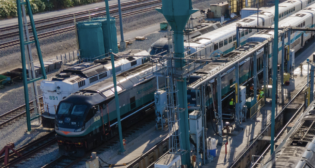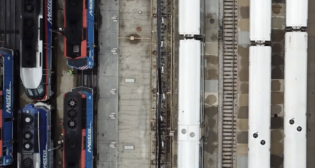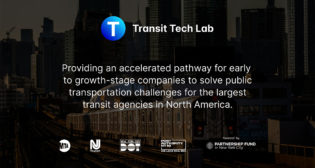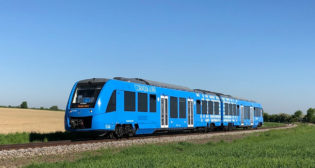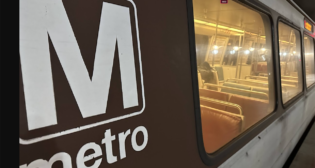
DART hits its targets
Written by William C. Vantuono, Editor-in-ChiefNo longer the lone star even within the Lone Star State, DART still is leading the rail transit renaissance within Texas—and the United States—by example.
Would that all U.S. transit agencies had DART’s problems.
Look behind the local media headlines bemoaning the fiscal future of Dallas Area Rapid Transit, and one discovers a beguiling truism: The debate over Big D’s rail transit future is just how to perpetuate DART’s growth—not whether DART should keep growing. “The debate is, ‘How do we do it’ and not ‘do we do it [at all],’” one Dallas-area resident observes.
That’s significant. Amid troubled economic times, DART has bolstered its equipment fleet in innovative fashion as it continues to add lengthy new route extensions. And in trying to balance rampant “galloping me-too-ism,” DART finds itself buffeted by supporters seeking ever-farther reach into the Dallas Metroplex suburbs, and those looking to bolster its route options in downtown Dallas itself. After all, the “Dallas Area” served by DART includes 12 other cities besides Dallas itself that took the leap of faith, and committed to rail transit, when conventional wisdom decreed that North Texas would reject any auto alternative.
“I’d like to think we’re doing it right,” muses DART President Gary Thomas. The give-and-take political stresses, he asserts, are “helpful, because we all ‘compete’ in a friendly manner. DART can’t take sides, but we want to make sure we have a reputation of bringing projects in on time and on budget, so no one’s worried how we’re using those federal dollars.”
He might add: Or whether the dollars spent will draw the riders. DART opened in June 1996 with 11 miles of light rail route and 14 stations—and never looked back. According to the American Public Transportation Association, DART is responsible for more than 25% of all light rail construction in North America. In fiscal year 2009, DART logged 65,000 rider trips each weekday, so its estimates of 130,000 average weekday trips by 2030, on a system of 85 miles that would be roughly double the current operation’s reach, seem plausible, perhaps even conservative.
DART officials say their goal is not just expanded service reach, but also improving the existing product offering where it already operates.
Equipment ‘C’ section triumph
DART has nearly completed its “Super Light Rail Vehicle” equipment upgrade launched in June 2008, adding low-floor inserts (‘C sections’), designed by DART staff and by Kinkisharyo, into existing two-car consists to increase capacity, reduce dwell time pressures, and improve access for the mobility impaired. The SLRV design also overcomes, for now at least, platform capacity constraints. While some stations, such as Cityplace Station, have ample platform lengths, many others, notably in downtown Dallas, can handle only three-car consists without being lengthened.
Kinkisharyo has shipped the SLRV insert kits to DART, which assembles them, tests and inspects the equipment, and puts it on the railroad. The estimated $190 million cost is judged by DART staff and rail transit observers to be an extremely economical gambit to add capacity. Thomas adds that DART also purchased the basic insert plans from a third party for a very modest sum—reflecting DART’s desire to stretch every capital dollar.
In an innovative complementary move, the agency has retrofitted existing station platforms by adding gradual risers to allow level access regardless of the door’s height (and eliminate any tripping hazards an abrupt “step-up” platform adjustment might generate). The undulating platform floors, rising (or falling) about seven inches, add an aesthetic element (and appear to be a favorite of small children awaiting the next train). Once aboard, the trip is often quite swift. Though speeds are limited in downtown and other pedestrian-friendly zones, the SLRVs are cleared for 60 mph or better at other times, breaking the institutional “55 mp mindset” many rail advocates insist arbitrarily limits LRT’s effectiveness
Green light for the Green, Orange lines
For DART, December 2010 is the target month for the expected culmination of multiple LRT additions. The agency added the first phases of its Green Line in 2009, a small, four-station segment reaching east from downtown Dallas to MLK Station/J.B. Jackson Jr. Transit Center. A stub end of the Green Line also opened in 2009 to Victory Station to the northwest, though only for special events at the American Airlines Center.
Those additions might be considered far too weighty on other LRT systems. For DART, they’re only a prologue to the Green Line extensions due to open December 6, southeast to Pleasant Grove, and aggressively northwest to Carrollton, Tex., where DART eventually will meet with Denton County Transportation Authority’s “A-Train” diesel multiple-unit (DMU) service, now under construction.
“People are starting to understand the [existing] Red Line and Blue Line are great,” Thomas says. “But the real opportunity is the connectivity throughout the system.” The opportunity also includes growing municipal and developer interest in transit-oriented development (TOD), something Thomas and DART staff are extremely proud to note, advance, and defend.
Construction began in April 2009 on the 14-mile Orange Line, which among other destinations would link downtown Dallas with Dallas/Fort Worth International Airport by the end of 2013. The Orange Line will run parallel with the Green Line through Downtown Dallas to Bachman Station in Northwest Dallas. From Bachman Station, the Orange Line will branch off to the northwest.
DART expects the Orange Line to benefit from $61 million in federal funds provided by the American
Recovery and Reinvestment Act (ARRA), with stimulus funds targeted toward the first two of three constuction phases. In what perhaps is a holiday spirit, DART hopes to open the first 5.4 miles in December 2011, and another 3.9 miles the following December, before reaching DFW in December 2013. Completion would mark 90 miles of light rail routes on the DART network, but for Thomas, the payoff, again, is connectivity. “It’s huge for people who work at the airport,” as well as for transit-savvy business travelers comfortable with transit access to hotel or business sites. Thomas also predicts that the Orange Line’s extension to the Cotton Belt Line, planned for regional/commuter rail service, “is where ridership will really take off.”
Linking with other rail players
DART’s track record also indirectly assists other regional rail partners, including Trinity Railway Express (TRE), linking Dallas with sister city Fort Worth, and the Denton County Transportation Authority. DART in fact coordinates and cooperates with those two bodies as well. DART’s website readily touts TRE’s regional rail service to and from Fort Worth, connecting with DART at Union Station and offering access (by shuttle bus) to DFW. (TRE’s website returns the favor, listing DART connections.) DART also has coordinated its plans for DFW Airport to complement those of TRE’s own access improvement plans.
Meanwhile, industry observers have lauded the DART/DCTA interface planned for Trinity Mills Station, where DART’s LRT Green Line and DCTA’s diesel multiple-unit (DMU) service will link up. DCTA service is set to begin in mid-2011, with 11 DMU trains produced by Stadler Bussnag AG expected to cover the 21-mile route linking the City of Denton with Trinity Mills Station, within DART’s Green Line service area but not at the line’s terminus. “The plan is to help riders on the DCTA A-Train access the DART Rail Green Line while keeping commuter rail on one track and light rail on another,” DART spokesman Morgan Lyons explains. “Our Trinity Mills Station will be designed to do that; it’s near the northern terminus of the Green Line and will be the southern terminus for the A-Train. DART customers also benefit with access to points north of Carrollton, like the University of North Texas in Denton.”
Thomas downplays the potential problems of mixing modes, including running afoul of Federal Railroad Administration safety regulations on mixing rail modes, saying, “From a technical standpoint, it’s fairly straightforward.” On the personal, political, and policy levels, Thomas says the North Texas transit trio aims for higher principles. “It’s important for the three of us to work together, to provide the transit needs of the region. It makes us all more successful.”
